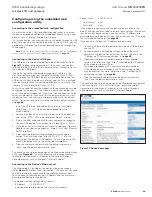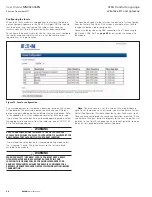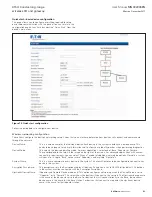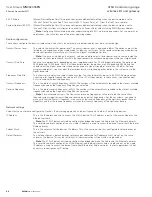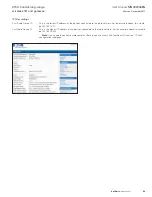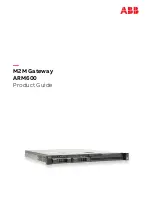
38
User Manual
MN032006EN
Effective December 2017
415U Condor-long-range
wireless I/O and gateway
EATON
www.eaton.com
Modbus TCP server and RTU slave tab
Click this tab in the Modbus configuration screen to change
parameters for the Modbus TCP server or RTU slave (see
Figure 60
).
Figure 60. Modbus TCP server and RTU slave tab
Modbus TCP Server
enabled
Allows the 415U-2 to accept connections from one or more Modbus TCP clients via Ethernet or RTU masters via
the RS-485 or RS-232 serial interfaces. All Modbus transactions routed to the on-board Modbus TCP server/RTU
slave are directed to/from the on-board general purpose I/O registers.
The Modbus TCP server is shared with the Modbus TCP to RTU converter, so that the Modbus device ID is used
to determine if a Modbus transaction is to be routed to the on-board Modbus TCP server or to a Modbus RTU
device connected to the serial port. Care should be taken to ensure that all serially connected Modbus devices use
different device IDs (for example, Modbus slave address), and the device ID is different than the onboard device ID.
Up to 32 separate connections to the Modbus TCP server are supported.
Device ID
The device ID for the modules own Modbus server/slave. This is the ID that any external Modbus client or Modbus
master would require to allow it to read values from the internal Modbus registers (for example, if a DCS or SCADA
computer needs to poll the 415U-2 via TCP or serial connection).
Modbus TCP client and RTU master tab
Click this tab in the Modbus configuration screen to set the Modbus
client scan rate, which is common to both the Modbus TCP client
and Modbus RTU master (see
Figure 61
). The default rate is
1000 msec. Each mapping is configured with a response timeout,
which is the period of time that the master will wait for a response
before indicating the failure on the Comms Fail Register.


























